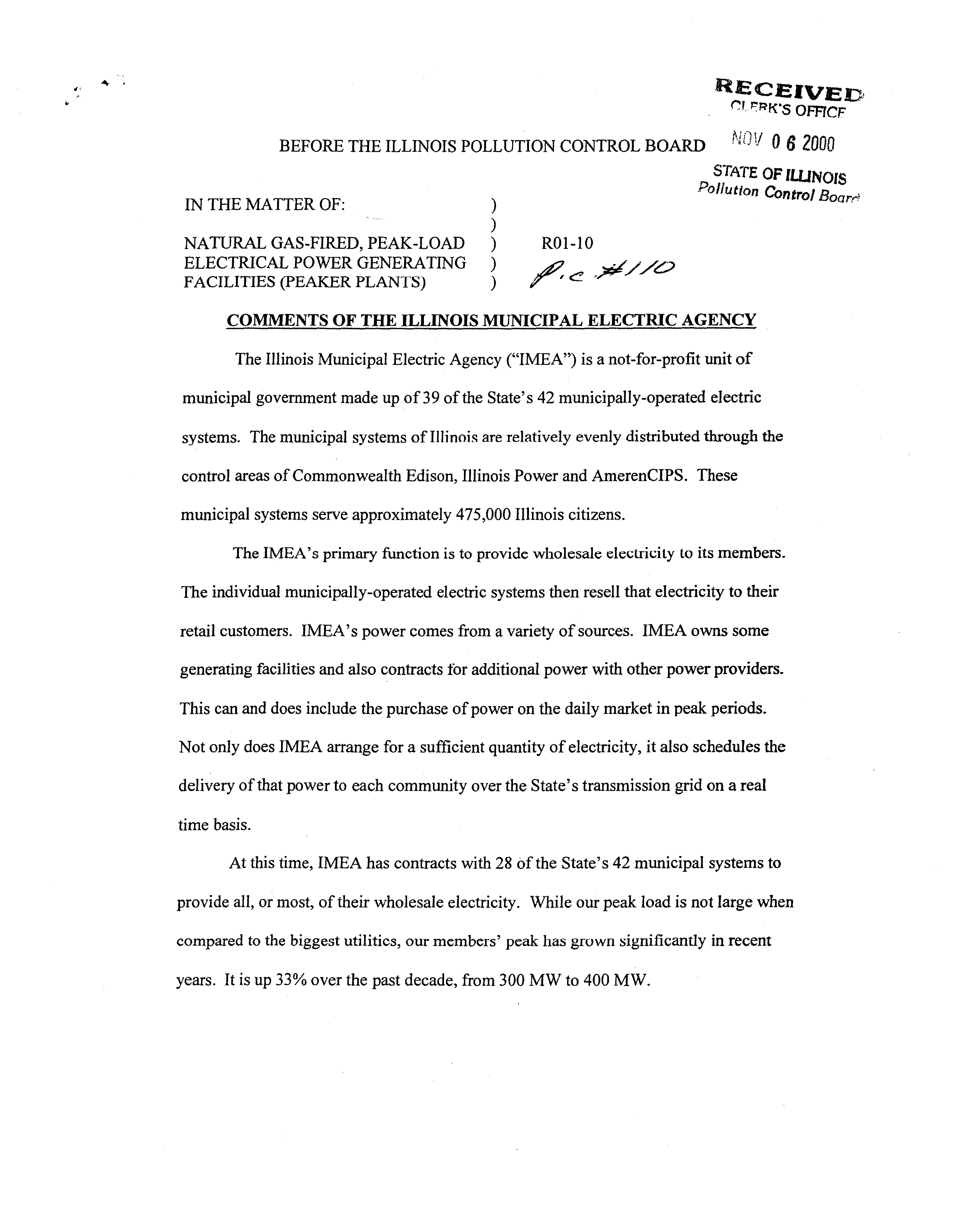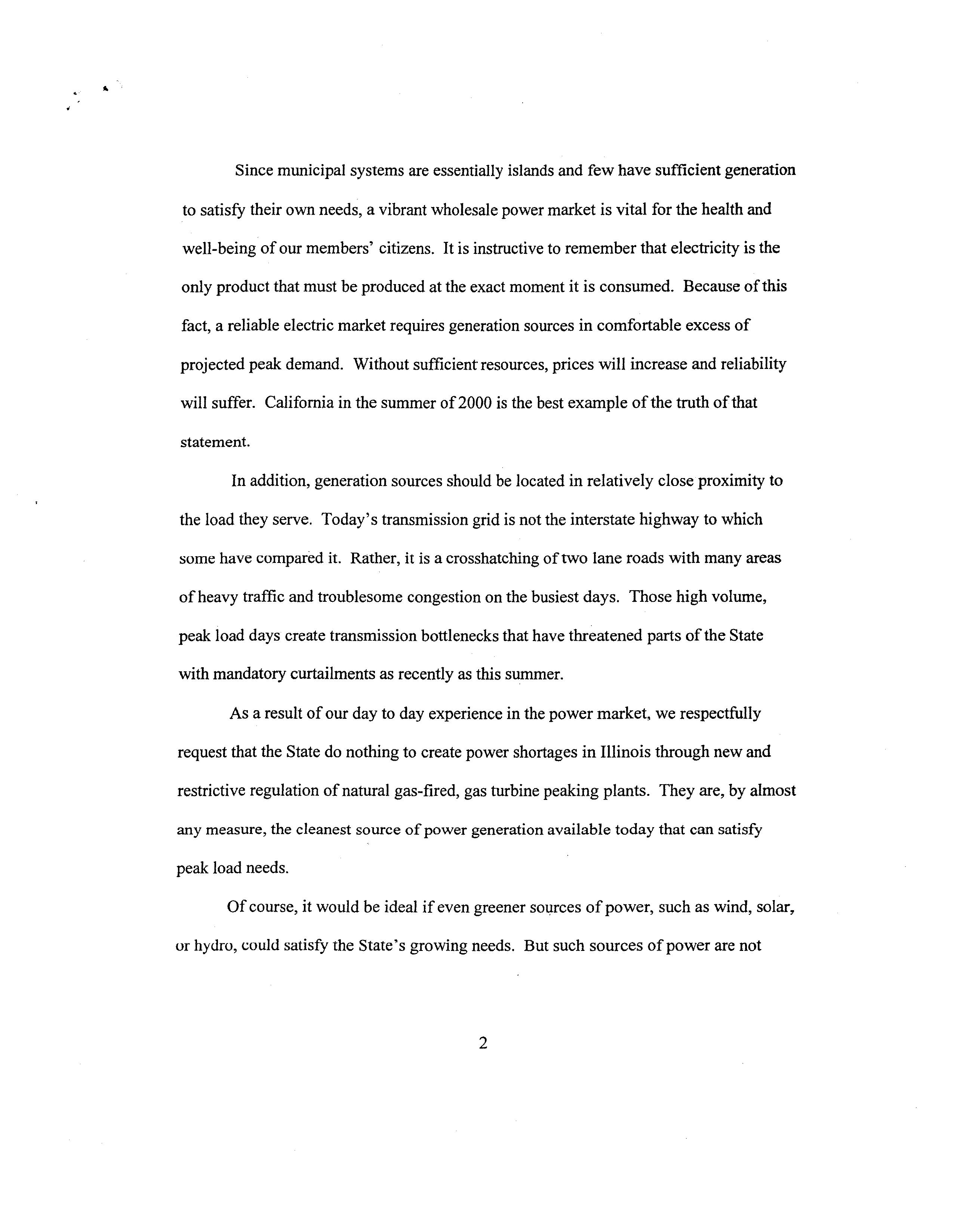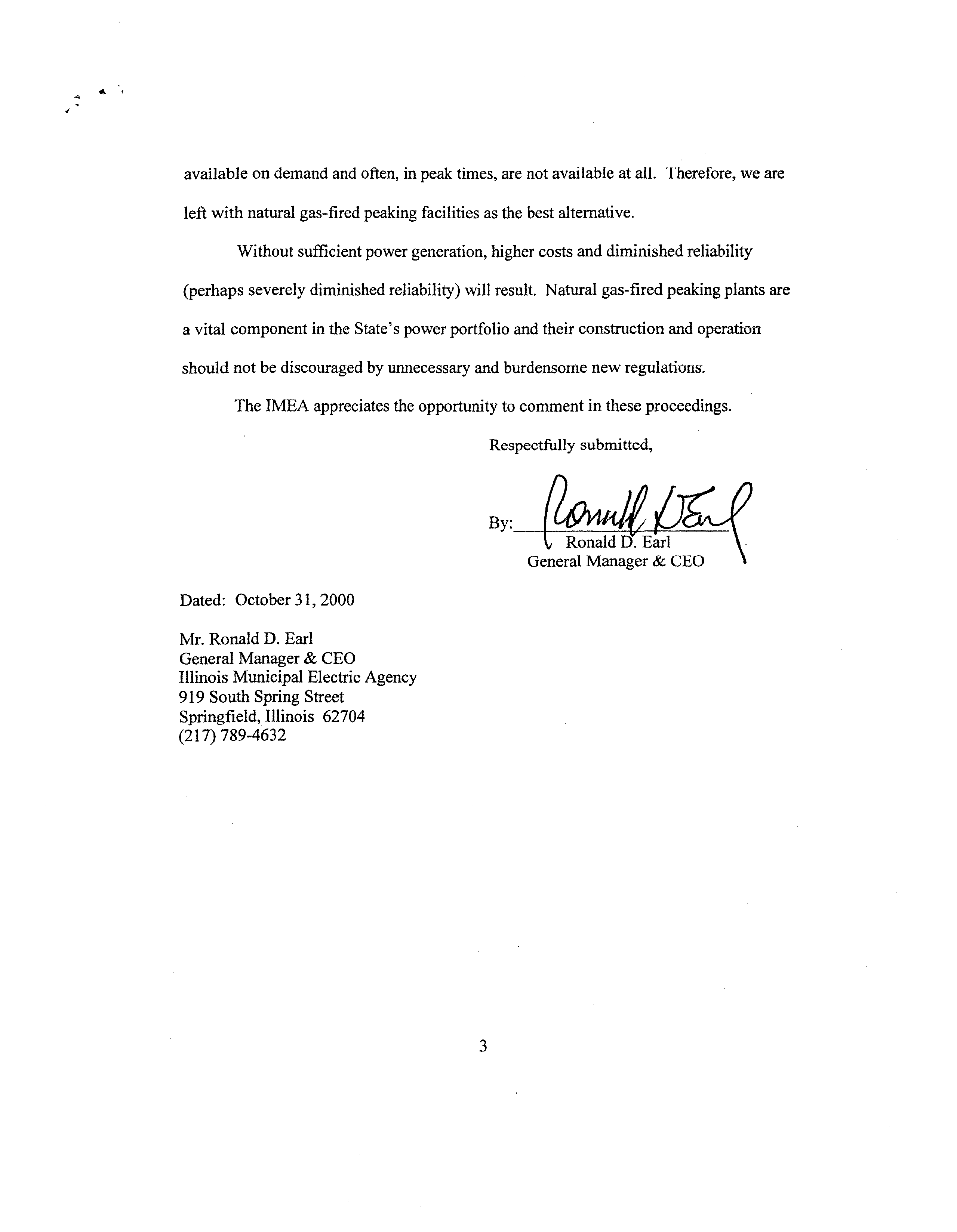RECEIVED
~ ~‘RicsOFFICF
BEFORE THE ILLINOIS POLLUTION CONTROL BOARD
~
06 2000
STATE
OF IWHO
Is
P0/lU
ft
on Qn~
IN THE MATTER OF:
)
ro, ~
)
NATURAL GAS-FIRED, PEAK-LOAD
)
ROl-lO
ELECTRICAL POWER GENERATING
)
~
FACILITIES (PEAKER PLANTS)
)
t
‘~
COMMENTS OF THE ILLINOIS MUNICIPAL ELECTRIC AGENCY
The Illinois Municipal Electric Agency (“IMEA”) is anot-for-profit unit of
municipal govermnent made up of 39 of the State’s 42 municipally-operated electric
systems. The municipal systems of Illinois are relatively evenly distributed through the
control areas of Commonwealth Edison, Illinois Power and AmerenCIPS. These
municipal systems serve approximately 475,000 Illinois citizens.
The IMEA’s primary function is to provide wholesale electricity to its members.
The individual municipally-operated electric systems then resell that electricity to their
retail customers. IMEA’s power comes from a variety of sources. IMEA owns some
generating facilities and also contracts for additional power with other power providers.
This can and does include the purchase of power on the daily market in peakperiods.
Not only does IMEA arrange for a sufficient quantity of electricity, it also schedules the
delivery ofthat power to each community over the State’s transmission grid on a real
time basis.
At this time, IMEA has contracts with 28 Of the State’s 42 municipal systems to
provide all, or most, of their wholesale electricity. While our peak load is not large when
compared to the biggest utilities, our members’ peak has grown significantly in recent
years. It is up 33 over the past decade, from 300 MW to 400 MW.
Since municipal systems are essentially islands and few have sufficient generation
to satisfy their own needs, avibrant wholesale power market is vital for the health and
well-being of our members’ citizens. It is instructive to remember that electricityis the
only product that must be produced atthe exact moment it is consumed. Because ofthis
fact, areliable electric market requires generation sources in comfortable excess of
projected peak demand. Without sufficient resources, prices will increase and reliability
will suffer. California in the summer of2000 is the best example ofthe truth ofthat
statement.
In addition, generation sources should be located in relatively close proximity to
the load they serve. Today’s transmission grid is not the interstate highway to which
some have compared
it.
Rather,
it
is acrosshatching oftwo lane roads with many areas
of heavy traffic and troublesome congestion on the busiest days. Those high volume,
peak load days create transmission bottlenecks that have threatened parts of the State
with mandatory curtailments as recently as this summer.
As a result of our day to day experience in the power market, we respectfully
request that the State do nothing to create power shortages in Illinois through new and
restrictive regulation of natural gas-fired, gas turbine peaking plants. They are, by almost
anymeasure, the cleanest source of power generation available today that can satisfy
peak load needs.
Of course, it would be ideal if even greener sources of power, such as wind, solar,
or hydro, could satisfy the State’s growing needs. But such sources of power are not
2
available on demand and often, in peak times, are not available at all. ~lherefore,we are
left with natural gas-fired peaking facilities as the best alternative.
Without sufficient power generation, higher costs and diminished reliability
(perhaps severely diminishedreliability) will result. Natural gas-fired peaking plants are
a vital component in the State’s power portfolio and their construction and operation
should not be discouraged by unnecessary and burdensome new regulations.
The IMEA appreciates the opportunity to comment in these proceedings.
Respectfully submitted,
By~~
General Manager & CEO
Dated: October 31, 2000
Mr. Ronald D. Earl
General Manager & CEO
Illinois Municipal Electric Agency
919 South Spring Street
Springfield, Illinois 62704
(217) 789-4632
3



